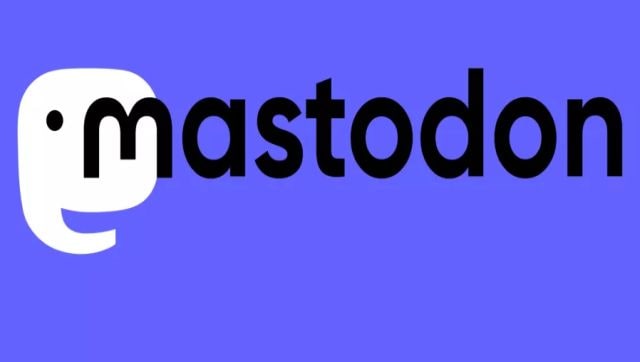Twitter is now an Elon Musk platform and the billionaire is bringing in several changes to the social media platform — from monetising the blue tick to laying off thousands of employees. These changes combined with the ‘Twitter Complaint Hotline Operator’s’ (in case, you didn’t know that’s Musk’s bio on Twitter) insistence on outraging the public has some users migrating, seeking new homes for their everyday musings.
Enter, Mastodon. No, we aren’t talking about the extinct mammal but a social media platform that’s been around for six years that has now become a popular choice among the people. The platform gained 70,000 new users on the day of Musk’s takeover of Twitter — and now has over 655,000 users, with over 230,000 having joined in the last week.
Don’t know if Mastodon’s actually the twitter replacement we’re looking for or if it just looks enough like Twitter to feel familiar but either way I’m https://t.co/WmX0hKUXgv on there
— November Alan (@alan_maguire) November 4, 2022
The platform — which proudly proclaims it is “not for sale” — is similar to Twitter but is free to use and free of ads.
As people migrate to this not-so-new platform, here’s a better understanding of this decentralised microblogging site and why people are making it their new online home.
What is Mastodon?
Mastodon is an open-source microblogging alternative to Twitter. Rather than a centralised platform, Mastodon consists of independent, user-managed servers. Users are based on one server but can interact freely with others.
Decentralised in nature, Mastodon was launched by Eugen Rochko, a once-avid and later disillusioned user of Twitter. Rochko was supported by Patreon in the launch of Mastodon in 2016.
Mastodon resembles Twitter in many ways, though the terms or lingo may be slightly different. It has a timeline or “feed” made up of what are essentially tweets, called “toots,” having a character count of 500. You can favourite these toots or “boost” them to your own followers, which is just like retweeting.
When you toot at other users, these posts appear on the timelines of users who follow you both. You can also bookmark toots and create lists of users showing only their toots — features that, as a Twitter user, you should already be accustomed to. All timelines, by the way, are strictly chronological. This means that posts appear in the order that they were posted. This is a mercy compared to Twitter, which uses an algorithm to surface what the service thinks you want to see. While that can be useful, it can also be dangerous. Mastodon does away with all of that.
How does it work?
Though it resembles Twitter in many ways, the working of Mastodon is different.
On signing in, the platform has a network of servers which are called “instances”. Users who sign up to the app will be asked to choose a server straightaway, deciding by searching through topics and languages. There are categories like technology, music, gaming, art and even ‘furry’.
Some are open to join while others require users to get on a waitlist. Anyone can submit a server for consideration, in the ambit of Mastodon’s rules.
Users can follow and interact with users on any server. The only way you won’t see content from a server is if it’s set to private.
What is interesting here is that each server is operated by an independent organisation or individual. The creator of the server decides the rules and moderates the content.
Moreover, users can join and leave instances as they please. This flexibility allows server owners to respond to the needs of its users, according to the official Mastodon website. You can “join a server with the rules you agree with, or host your own.”

Mastodon.social is the flagship server of the service and it is run by a Mastodon gGmbH, a non-profit that is crowdfunded by Patreon donations. Image Courtesy: Mastodon
What’s with the different ‘instances’?
One has to keep in mind that Mastodon, unlike Twitter, isn’t owned by one person or firm. All of these different servers, or ‘instances’ link together, and form a collective network, but they are owned by different people and organisations.
This is known as decentralised — and is becoming big in the tech world as they can’t be run at the whim of a single entity, bought or sold. Speaking to Time magazine, Rochko said, “I was thinking that being able to express myself online to my friends through short messages was very important to me, important also to the world, and that maybe it should not be in the hands of a single corporation. It was generally related to a feeling of distrust of the top down control that Twitter exercised.”
****
Will Elon Musk lift Twitter bans on Donald Trump, Kangana Ranaut and other ‘outcasts’?
Old Vine, New Twitter: What’s the short-form video app that Elon Musk wants to revive?
From flamethrowers to challenging Putin to combat, why Elon Musk is the king of publicity stunts
****
What are the problems with Mastodon?
Apart from the initial teething troubles and moving away from the ‘blue bird’, there are other problems to using Mastodon.
The single-most glaring issue with Mastodon is that you are left at whim of the person or organisation running your server. A Mastodon server admin has ultimate control over everything you do — if they decide to abandon it, you lose your account.
A server admin could also snoop on private toots if they wanted to – or delete an account for any reason.
On the issue, Rochko has said that new users should look at who runs the server before they join it. He was quoted as telling The Guardian, “Is it an organisation that has a track record, is trustworthy, is likely to be around for a long time, but also has a moderation policy?”
He explains further, “The ‘good ones’ have rules against hate speech, and provide basic necessities like backups, so if one of the admins gets hit by a bus, the server does not disappear.”
He added that Mastodon includes a list of vetted servers on its homepage that meet these criteria.
Is there an Indian connection?
No, not in the way you think.
However, in 2019 several Indian Twitter users suggested a shift to Mastodon after they complained Twitter censored accounts belonging to marginalised caste and tribe users, and did not take measures to stop those spreading casteist abuse.
Should you migrate to Mastodon?
With Musk’s takeover of Twitter, many users are afraid that the platform will be a cesspool of hate, taking into consideration of what the billionaire perceives as ‘free speech’ and his views on moderation.
Many have already made the jump from Twitter to Mastodon — Hollywood actor and comedian Kathy Griffin joined in early November while singer Sara Bareilles tweeted, “Welp. It’s been fun Twitter. I’m out. See you on other platforms, peeps. Sorry, this one’s just not for me.”
So, should you use Mastodon? While it may seem complicated compared to Twitter, it just takes time to get used to it. And if you are wary of Twitter, Mastodon may be the place to be.
As The Verge says, “It’s a rare chance to join a growing network in its infant stages. That is, before it succumbs to the fate of so many of its contemporaries, and is overrun with politics, birthday updates, and mindless rants.”
With inputs from agencies
Read all the Latest News, Trending News, Cricket News, Bollywood News,
India News and Entertainment News here. Follow us on Facebook, Twitter and Instagram.










